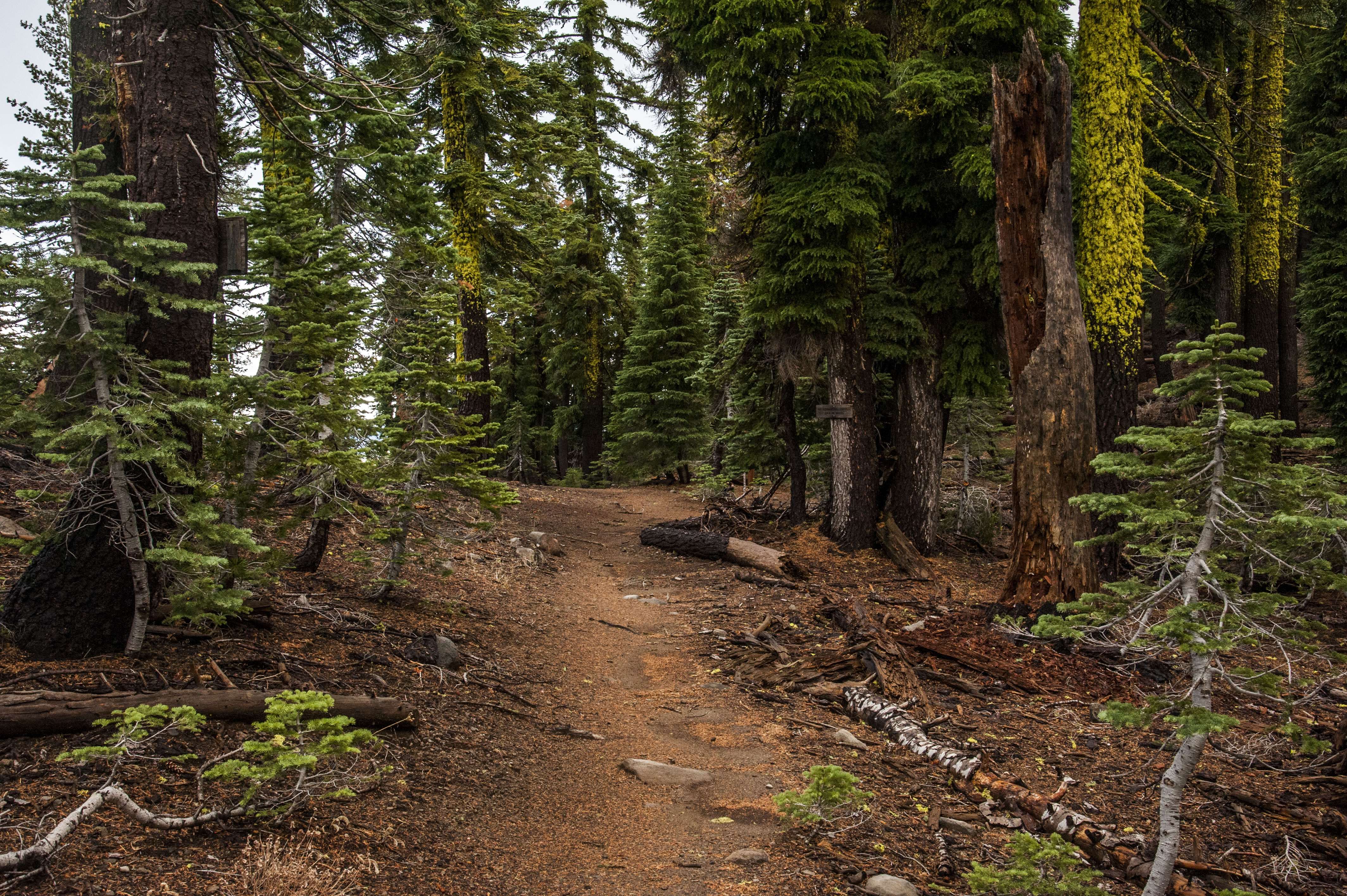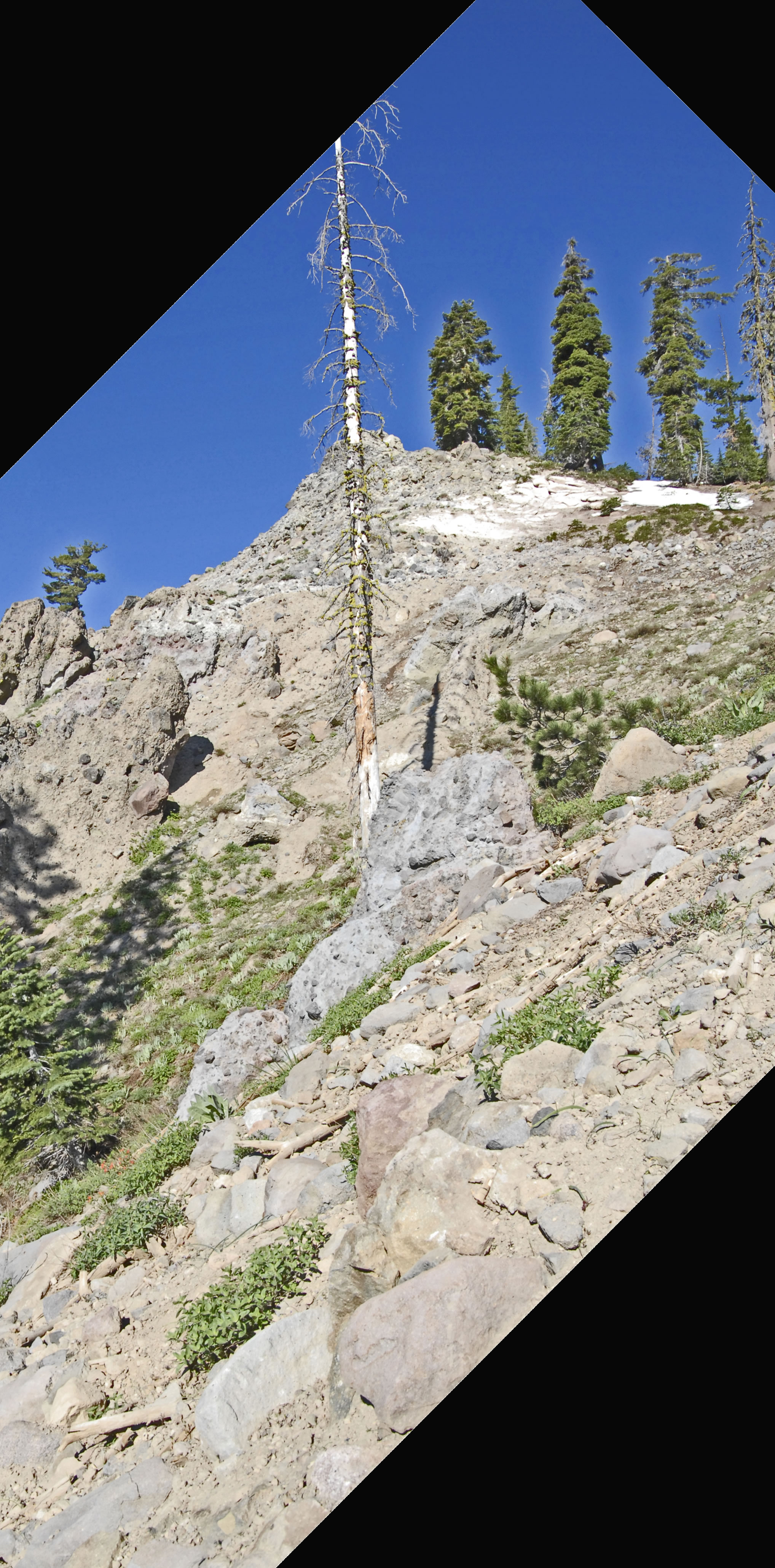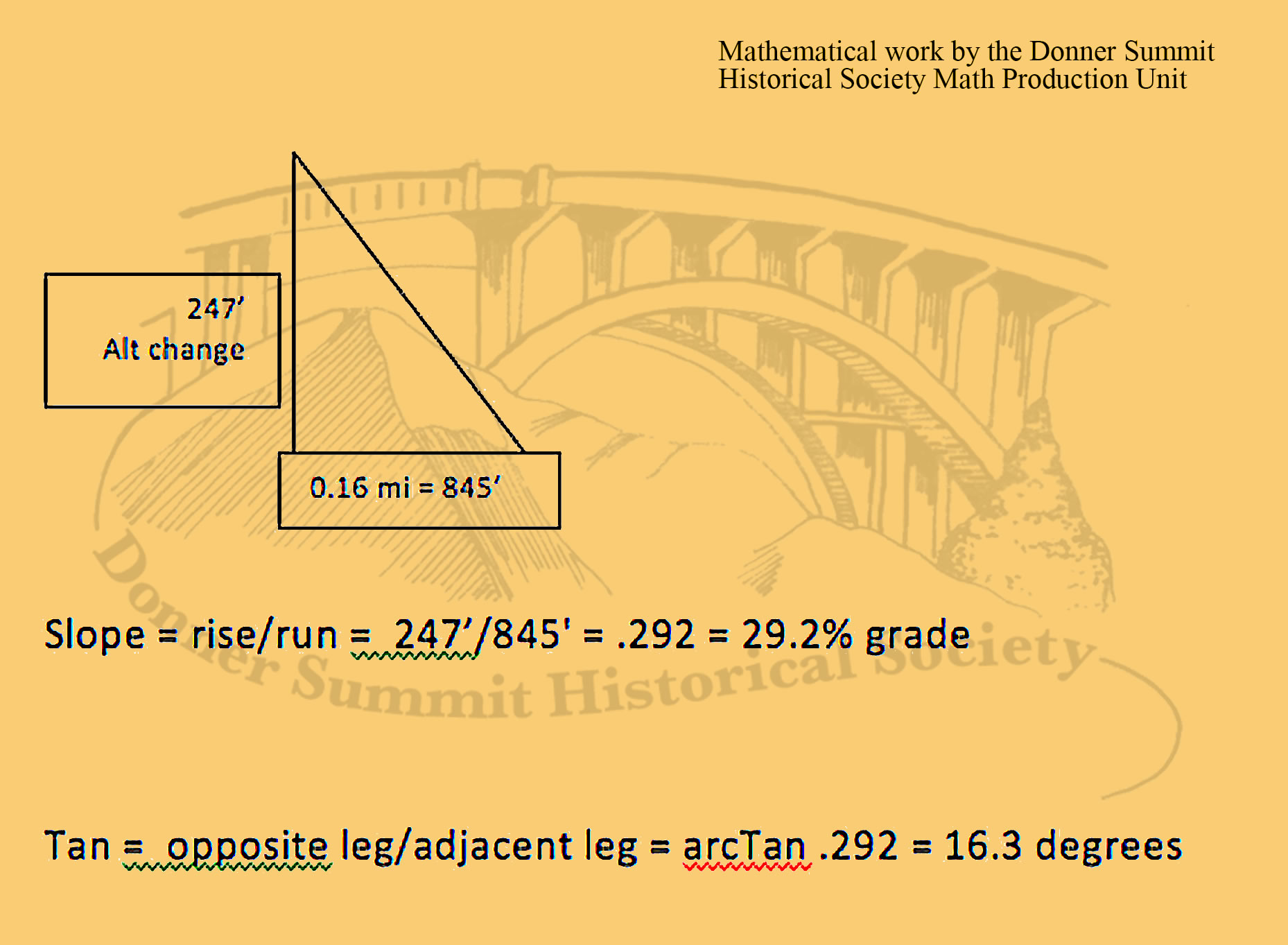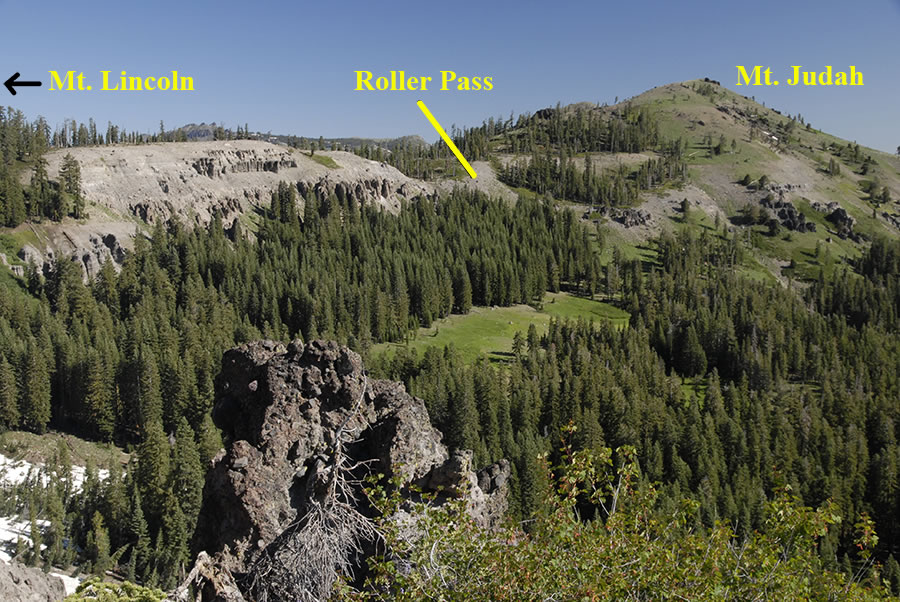
Roller Pass, the approach is above, is the one of the most popular historical spots to visit. It is incredible to believe, given its steepness, that it's easier than Donner Pass. Just standing at the top and looking down is enough. Words won't do it justice. Below is a clever way of showing the incline. If you are a math person take a look at the math of Roller Pass below.
 Joseph Aram wrote of the discovery of Roller Pass in 1846, "The next day we reached the Sierra Nevada mountains. We spent three days there exploring the mountains to find a pass where we might make a crossing. A party of us took our horses and went to the summit, and traced it both ways and finally decided on a place to make the crossing. It was quite an undertaking to get our wagons up. We put about five yoke [pair of oxen] on a wagon, and had as many men with it as was necessary to keep it from sliding sideways. Then with five yoke on the summit letting down our long one hundred and fifty feet rope, and hitched it with the leaders that were on the wagon, by this process, we succeeded in getting all the wagons up safely, and soon was ready to push ahead on our journey. Here we received our first intelligence of the Mexican War, by two young men that had been as far as Sutter's Fort. We then pushed on as fast as possible for the Sacramento valley."
Joseph Aram wrote of the discovery of Roller Pass in 1846, "The next day we reached the Sierra Nevada mountains. We spent three days there exploring the mountains to find a pass where we might make a crossing. A party of us took our horses and went to the summit, and traced it both ways and finally decided on a place to make the crossing. It was quite an undertaking to get our wagons up. We put about five yoke [pair of oxen] on a wagon, and had as many men with it as was necessary to keep it from sliding sideways. Then with five yoke on the summit letting down our long one hundred and fifty feet rope, and hitched it with the leaders that were on the wagon, by this process, we succeeded in getting all the wagons up safely, and soon was ready to push ahead on our journey. Here we received our first intelligence of the Mexican War, by two young men that had been as far as Sutter's Fort. We then pushed on as fast as possible for the Sacramento valley."
 To climb Donner Pass wagons had to be disassembled but Roller Pass didn't require disassembly. It's still difficult to walk up it just by yourself without oxen to drive, a wagon to bring, or children to carry. You'll have gotten to the top of the pass after only a two mile walk. The emigrants had been walking for months. They'd crossed the desert. They were low on food, tired, and anxious and here was another hurdle, a mountain of a hurdle. Wagons gathered at the meadow at the bottom and went up the pass one at a time. All the rope, chain and even tree branches were used to stretch up to the top and over a log that was the "roller" (take a look at the 20 Mile Museum sign here). All the oxen in the train were taken up first and hitched together to provide pulling power. There were men at each wagon wheel to help keep the wagon moving and prevent it from tipping.
To climb Donner Pass wagons had to be disassembled but Roller Pass didn't require disassembly. It's still difficult to walk up it just by yourself without oxen to drive, a wagon to bring, or children to carry. You'll have gotten to the top of the pass after only a two mile walk. The emigrants had been walking for months. They'd crossed the desert. They were low on food, tired, and anxious and here was another hurdle, a mountain of a hurdle. Wagons gathered at the meadow at the bottom and went up the pass one at a time. All the rope, chain and even tree branches were used to stretch up to the top and over a log that was the "roller" (take a look at the 20 Mile Museum sign here). All the oxen in the train were taken up first and hitched together to provide pulling power. There were men at each wagon wheel to help keep the wagon moving and prevent it from tipping.
Sometime in 1846 Coldstream Pass was discovered and it was so much easier even though the altitude is about the same.
Below is Roller Pass from the backside along the Pacific Crest Trail to Mt. Anderson and further on, Squaw Valley.


